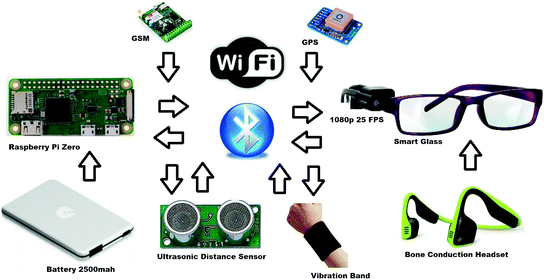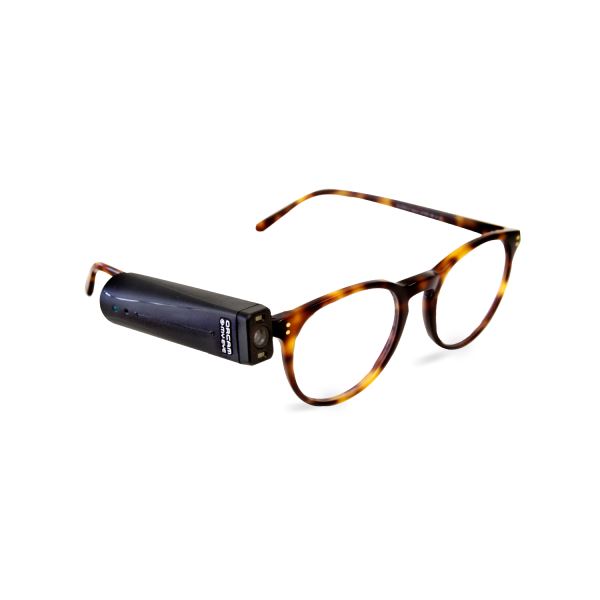The Future of Assistive Technology for the Blind: Empowering Independence
The Future of Assistive Technology for the Blind: Empowering Independence
Blog Article
Cutting-edge Solutions in Assistive Technology for Visual Disability
The landscape of assistive technology for visual disability is progressing rapidly, presenting an array of innovative solutions that boost access and freedom. From advanced smartphone applications that assist in navigating to wearable gadgets made for real-time guidance, these devices are reshaping the experiences of those with aesthetic problems.
Improvements in Smart Device Applications
Recently, innovations in smart device applications have actually dramatically transformed the landscape of assistive modern technology for individuals with aesthetic disabilities. These applications utilize the effective sensors and abilities of contemporary mobile phones to offer customers with tools that boost freedom and availability in their day-to-day lives.
Remarkable amongst these advancements are applications made for object recognition, which use the smartphone's camera to recognize items and offer spoken summaries. Such functions equip customers to navigate their atmospheres more successfully, whether recognizing products in stores or locating individual possessions in the house. Additionally, text-to-speech applications have actually improved dramatically, allowing users to catch published text through their device's electronic camera and obtain split second audio comments, thereby assisting in reading and comprehension.
Navigation applications tailored for aesthetically impaired customers have actually also arised, using auditory support and detailed area info. These tools supply vital assistance for movement, permitting individuals to go across unfamiliar areas with self-confidence. Community-driven applications have actually cultivated social communication and source sharing amongst people with aesthetic disabilities, creating a supportive network that enhances their high quality of life. Overall, mobile phone applications have actually come to be essential allies in promoting autonomy and ease of access for people with aesthetic disabilities.
Wearable Devices for Navigating
Wearable tools for navigating have become a groundbreaking service for people with visual problems, supplying hands-free assistance that improves mobility and orientation. These devices typically use advanced modern technologies, consisting of GPS, ultrasonic sensors, and man-made knowledge, to offer real-time comments and instructions to users as they browse their setting.
One significant example of wearable navigating innovation is clever glasses, which can spot obstacles and relay auditory or haptic comments to the user, permitting reliable and secure motion in numerous settings. Various other devices, such as vests and belts furnished with sensing units, can in a similar way notify users of their environments by supplying informs regarding neighboring things or modifications in surface.
Additionally, several wearable gadgets incorporate with smartphone applications, making it possible for customers to customize their navigation choices and obtain tailored course tips. This customization can considerably improve the customer experience, equipping people to travel with better confidence and freedom.
As technology proceeds to develop, the capacity for wearable navigation devices to improve the lifestyle for individuals with visual problems continues to be considerable, paving the method for even more obtainable and comprehensive settings.
Smart Home Technology Combination

In addition, smart home appliances equipped with responsive user interfaces or auditory responses offer intuitive communications that provide particularly to the needs of those with visual disabilities. For example, wise fridges can reveal their materials and expiration dates, while smart ovens can assist individuals through the cooking process with audio instructions.
Home automation systems, such as wise buzzers and protection cameras, supply satisfaction by enabling customers to receive signals and accessibility live feeds using their mobile phones, boosting individual safety and security (AI-powered visual aids). Furthermore, combination with tablet computers and mobile phones ensures that customers can handle their home environment from anywhere within their properties
As smart home technology remains to develop, it holds the prospective to change the living experiences of people with visual disabilities, promoting self-reliance and improving lifestyle in a progressively linked eyesight examination globe.

Educational Devices and Resources
Accessibility to effective educational devices and sources is important for people with aesthetic impairments, as it empowers them to involve completely in their learning experiences. Different assistive technologies have actually been established to improve accessibility and foster independent understanding.
Additionally, educational software application especially designed for aesthetically impaired users provides functions such as high-contrast settings and adjustable text sizes. These devices fit varied knowing styles and ensure that trainees can tailor their educational experience to their requirements.
In addition, accessibility to audio books and virtual libraries broadens the series of readily available understanding products, allowing pupils to discover topics comprehensive without the restrictions enforced by conventional print sources. Collective systems that integrate availability features also facilitate team jobs, ensuring that aesthetically damaged trainees can contribute meaningfully alongside their peers.
Community Assistance and Engagement
A durable network of neighborhood assistance and interaction is important for individuals with aesthetic impairments, fostering an inclusive setting where they can thrive. Area companies, local advocacy groups, and volunteers play a critical role in giving resources, info, and friendship, which are crucial for boosting the high quality of life for those influenced by aesthetic problems.
Engagement tasks such as workshops, get-togethers, and support groups not just help with ability development but likewise promote social communication, minimizing feelings of seclusion. These campaigns encourage individuals to share successes, experiences, and challenges, therefore strengthening community bonds. In addition, collaborations with neighborhood companies can cause greater availability in public areas, better integrating individuals with aesthetic impairments into the neighborhood.
Technology likewise improves neighborhood interaction through online platforms that supply virtual support groups and sources, permitting people to connect despite geographical obstacles. By utilizing both digital my response and in-person options, areas can develop a comprehensive support network. Inevitably, promoting cooperation amongst various stakeholders-- including households, instructors, and medical care professionals-- ensures that individuals with aesthetic impairments receive the holistic support necessary to browse day-to-day live effectively and with self-respect.
Conclusion
Ingenious solutions in assistive modern technology for visual impairment significantly enhance the lifestyle for individuals dealing with these obstacles. The assimilation of smart device applications, wearable devices, smart home innovation, and instructional tools fosters higher independence and access. Moreover, community support and interaction additional empower visite site visually damaged individuals, promoting inclusivity and engagement in numerous elements of life. Collectively, these developments not just transform everyday experiences but also lead the way for a much more fair society.
The landscape of assistive innovation for visual impairment is evolving rapidly, providing an array of innovative options that boost availability and self-reliance. Community-driven applications have actually fostered social communication and resource sharing amongst individuals with visual problems, creating a supportive network that boosts their top quality of life. Generally, smartphone applications have actually ended up being vital allies in promoting autonomy and ease of access for people with visual problems.
Lots of people with visual disabilities are locating better autonomy via the integration of smart home technology.Cutting-edge solutions in assistive modern technology for aesthetic problems dramatically improve the top quality of life for people dealing with these challenges.
Report this page